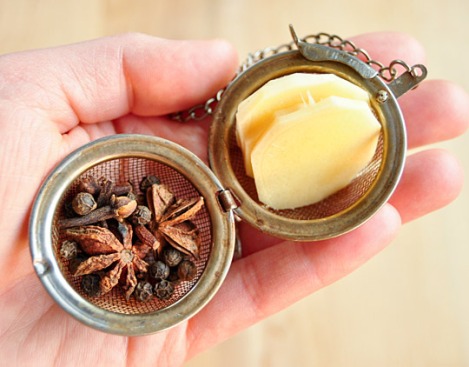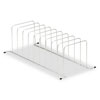Easy Kitchen Tips & Tricks
I hate that moment when cooking where I stare, dumbfounded, at whatever project I have been doing wrong or less efficiently for the last 30 years of my life. “WHY didn’t someone TELL me about this!?” Well, here’s a compilation of my favorite *facepalm* tips to help prevent you from having those moments, too.
These tricks, tips, and tools will help make the process of prepping, cooking, baking, storing food, cleanup, and general kitchen living much easier. Cooking for a low-amine diet is hard enough as is, so take a load off. Enjoy these easy kitchen tips and tricks, and happy cooking!
Prepping:
- Quickly, cleanly seed a pomegranate
- Refrigerate your onions at least an hour before chopping to reduce the tears.
- Peel a head of garlic in 10 seconds (be sure to use metal or rigid plastic bowls – softer plastic will not work as well).
- Shred chicken perfectly and easily. While chicken is still warm, toss the chicken in your KitchenAid mixer (using the cookie paddle attachment) and give it a whirl.
- Got herbs? Ditch the cheesecloth. Buy a tea ball.
Spices in a tea ball instead of using cheesecloth
- Cook perfect hard boiled eggs, every time.
- Make your sauce thickener for the month in advance. Using equal parts flour and butter, melt butter in pan over low heat. Slowly add flour, stirring constantly, until all flour is added and cooked through (don’t let it burn or get clumpy). Once somewhat cooled, pour/scrape into a small tupperware and use as a sauce thickener or gravy base as needed, by the spoonful.
- If your cutting board is sliding around (very dangerous – you could cut off your finger!), slightly dampen a kitchen towel and lay it underneath the cutting board. It will stabilize it and hold it in place.
- Marinate steaks in a cup of strong, cooled black tea for a naturally tenderized (by utilizing the tannins in tea) steak.
- If your root vegetables withered a little bit and got a touch rubbery, revitalize them by plunging them into an ice cold water bath and allowing to soak for a few hours. This also works with brussels sprouts.
Cooking:
- (I haven’t tried this yet – let me know if it works) If a vegetable or cereal burns, plunge the pot containing the burned food into cold water. Allow it to remain for a few minutes before pouring the contents into another pan. This will do away almost entirely with the burned taste.
- When poaching eggs, a teaspoonful of vinegar added to the water will help keep the whites from spreading. I have not yet tried this while using an ascorbic acid substitute, but I’ll let you know if it works once I do.
- When battering foods in flour, instead of laying the ingredient down in a plate of flour, use a large salt shaker instead. You’ll waste less flour.
- Add a bit of cream of tartar, club soda, or baking soda to eggs while beating to make scrambled eggs fluffier.
Baking:
- Before creaming butter and sugar together, first pour hot water into the mixing bowl, let it sit for a few minutes and then dump it out and wipe bowl dry. The butter and sugar mixture will cream together more quickly.
- Use rocks when steam is needed to bake bread.
- Need to chill cookie dough in a hurry? Freeze it 20 minutes per every hour that recipe indicates to refrigerate.
- As you take a cake from the oven, place it for a few seconds on a cloth wrung out of cold water. Then it may be turned out easily without sticking to the pan.
- If you’re baking dozens of cookies and are short on cookie sheets, line sheets with aluminum foil first. This lets you quickly pull them off with the cookies as they finish baking. Allow pans to cool (you can do this by rinsing under cool water, but don’t do it with nice ones – the rapid temperature change will warp your cookie sheet), line with a fresh sheet of foil and start again.
- The secret to flaky pastries? Frozen butter! Grate frozen butter into flour and ice water. Mix minimally. Roll pie crust, tart dough, etc, and… Ta-Daaaa! Fabulous pastry.
Food Storage:
- If you have a big enough, empty enough freezer, here’s a great way to freeze soups
- Mark eggs to use up first with a pencil before filling tray with fresh eggs.
- If making homemade small-serving sauces or broths, freeze the remainder in ice cube trays, pop out, and store in the freezer in labeled Ziplock bags.
- Leftover onion keeps better when the root is left intact. Use top part first.
Clever Tricks:
- Want ice and lime in your drinks? Wash your limes well, cut them into wedges and add some additional cuts to help juices “leak” out of the lime wedges. Freeze the wedges and throw them in your glass in lieu of ice.
- If two glasses are stuck together, fill the top glass with cold water and set the bottom glass in hot water. Try to carefully twist the two glasses apart after a minute.
Cooking for the week:
- For sandwiches that aren’t soggy, your best bet is to get all your ingredients together, but store them separately. If that isn’t an option or doesn’t appeal to you, you can also add 1 Tbsp dry mustard in with a stick of butter. Keep it in your fridge and when you are making sandwiches, use it as a yummy spread that will help repel moisture from bread. No squishy sandwiches here!
- Make several salads at once for your lunches by putting them in jars. Dressing on the bottom with hard ingredients such as cashews, carrot, celery, etc, and lettuce on the top where it won’t get crushed or bruised.
- Make steel cut oatmeal in a large batch and pour it into a few jars, to be reheated as needed throughout the week.
Kitchen Storage / Tools:
- Make lid storage easier by hanging pans and lids together
- Don’t have room to hang pans and lids? In my kitchen I can’t hang them, so I went to Goodwill and found a sturdy wire paper file organizer and use it to store my lids vertically:
Photo of a wire paper file desk organizer used as a pot and pan lid organizer.
- You like pureed soups? Get an immersion blender. They’re around $20 and will save you plenty of time and burns. Puree your soups in the pot, rather than in blender or food processor batches. They’re also great for making smoothies.
- Cuisinart Food Processors are my most favorite kitchen tool. EVER. I have two – a mini and a full size.
- — The mini food processor is great for mincing/chopping great big batches of garlic, ginger, or nuts, or for whirring together a quick, emulsified salad dressing.
- — The full-sized Cuisinart food processor is fabulous. For everything. Get the attachments and it allows you to chop, slice/scallop (fantastic for making Celery Root & Potato Au Gratin!), grate (I will never grate carrots or cheese or potatoes for hash browns by hand ever, ever again), make nut butters, etc… If I had to pick one kitchen gadget to keep, this would be it.
- I have a porcelain ginger grater. It’s fabulous, and keeps the fibrous bits out of your ginger. If you can find a small, stiff-bristled brush to get the ginger out from between the teeth, even better.
I Can’t Believe People Throw These Away:
- Beet tops – eat them sautéed, braised, or in soups. They resemble a sweet chard.
- Celery tops – use for stock, stir fry, soups, and more.
- Vegetable scraps (onion skins, butts of asparagus, peels and skins of potato, carrot, etc, carrot tops, beet/radish “tails” growth end of greens, green onion root bases, and fibrous bits and stalks) – save and use to make homemade broth / stock. Do not include rotten pieces, avocado skins, or apple/pear seeds (low level cyanide).
- Radish tops – wash well and use in salads.
- When cooking meats that create a lot of grease, pour the grease into a can (or use a can opener to take the top off a soda) to either save it for cooking later, or to cool it before throwing away.
Cleaning My Kitchen and Myself:
- If you have food coloring stains on your hands, rub vegetable oil on them. Wash and repeat until the color is gone.
- Hands reek of garlic, onion, or fish? Get a stainless steel bar and wash your hands with it. Mine has magically pulled every known scent out of my hands. I love it.
- Line the tops of cupboards with sheets of wax paper to protect cupboards from grease buildup and no more messy cleanup jobs.
- To pick up slivers of broken glass, use a damp paper towel. The slivers will cling to it.
- Washing metal pots and pans must be done once cooled, or they will warp.
- Dip rusted metalware in pure cider vinegar then let it dry. After a few days you should be able to wipe away the remaining loose particles.
- Remove coffee stains from mugs by soaking overnight in vinegar.
- Easily clean pans with burnt food by adding a small amount of water, heating to boil, then scraping with a spatula.
A little aside…My number one rule for cooking has become “Trust your instincts (aka. “Never listen to the recipe”).” It seems like every time I try an ingredient I’ve never used, or a dish I’m completely unfamiliar with, and try to stick to the recipe… Yuck. The results are disastrously bad or bland or has any number of other problems. When you get to the point that you really think you do know better than the recipe, trust your instincts. It will save you a lot of heartache, prevent a lot of thrown-away food, and avoids your good friends wondering whether you’ve forgotten how to cook.Published on November 15, 2011 at 9:48 am Comments (7) ![]()
The URI to TrackBack this entry is: /easy-kitchen-tips-tricks/trackback/

